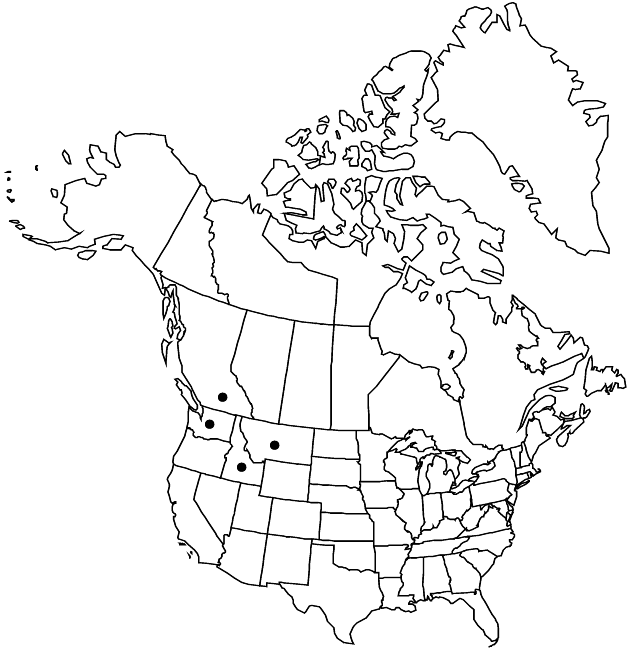Difference between revisions of "Ionactis stenomeres"
Pittonia 3: 246. 1897.
Common names: Rocky Mountain ankle-aster
Endemic
Basionym: Aster stenomeres A. Gray Proc. Amer. Acad. Arts 17: 209. 1882
FNA>Volume Importer |
imported>Volume Importer |
||
| (3 intermediate revisions by 2 users not shown) | |||
| Line 8: | Line 8: | ||
}} | }} | ||
|common_names=Rocky Mountain ankle-aster | |common_names=Rocky Mountain ankle-aster | ||
| + | |special_status={{Treatment/ID/Special_status | ||
| + | |code=E | ||
| + | |label=Endemic | ||
| + | }} | ||
|basionyms={{Treatment/ID/Basionym | |basionyms={{Treatment/ID/Basionym | ||
|name=Aster stenomeres | |name=Aster stenomeres | ||
|authority=A. Gray | |authority=A. Gray | ||
| + | |rank=species | ||
|publication_title=Proc. Amer. Acad. Arts | |publication_title=Proc. Amer. Acad. Arts | ||
|publication_place=17: 209. 1882 | |publication_place=17: 209. 1882 | ||
| Line 37: | Line 42: | ||
-->{{#Taxon: | -->{{#Taxon: | ||
name=Ionactis stenomeres | name=Ionactis stenomeres | ||
| − | |||
|authority=(A. Gray) Greene | |authority=(A. Gray) Greene | ||
|rank=species | |rank=species | ||
| Line 51: | Line 55: | ||
|publication title=Pittonia | |publication title=Pittonia | ||
|publication year=1897 | |publication year=1897 | ||
| − | |special status= | + | |special status=Endemic |
| − | |source xml=https:// | + | |source xml=https://bitbucket.org/aafc-mbb/fna-data-curation/src/2e0870ddd59836b60bcf96646a41e87ea5a5943a/coarse_grained_fna_xml/V19-20-21/V20_160.xml |
|tribe=Asteraceae tribe Astereae | |tribe=Asteraceae tribe Astereae | ||
|genus=Ionactis | |genus=Ionactis | ||
Latest revision as of 21:00, 5 November 2020
Plants 12–30 cm (sometimes weakly cespitose, caudices multicipital or with relatively short branches; rhizomes fibrous-rooted, thickened, becoming woody). Stems proximally herbaceous or slightly woody, eglandular. Leaves: proximal separated by evident internodes, spatulate, reduced in size distally; mid and distal linear-lanceolate, 15–25(–30) mm, margins green, faces hispidulous. Heads borne singly. Involucres 8–13 mm. Disc florets bisexual, fertile; corollas 7.5–8.5 mm. Cypselae 5–6 mm, faces sessile- to stipitate-glandular.
Phenology: Flowering Jun–Sep.
Habitat: Dry slopes, grassy ridges, and openings
Elevation: 1700–2200 m
Distribution

B.C., Idaho, Mont., Wash.
Discussion
Selected References
None.
Lower Taxa
None.